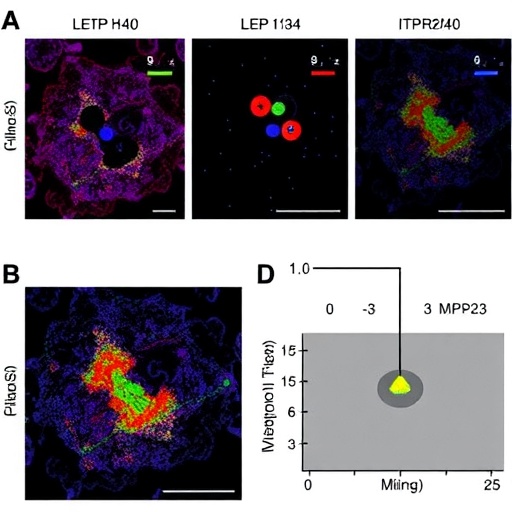WASHINGTON — While patients with inflammatory rheumatic diseases such as rheumatoid arthritis (RA) or spondyloarthritis are at increased risk for cardiovascular disease (CVD), too few are prescribed preventive medications or meeting target goals to prevent heart-related events, according to new research findings presented this week at the 2016 ACR/ARHP Annual Meeting in Washington.
RA is a chronic disease that causes pain, stiffness, swelling, and limitation in the motion and function of multiple joints. Inflammation may also affect internal organs. An estimated 1.3 million Americans have RA. Spondyloarthritis are inflammatory diseases that include ankylosing spondylitis (AS), psoriatic arthritis (PsA), reactive arthritis and others. These diseases often affect the entheses, or areas where ligaments and tendons attach to bones.
Both anti-hyperintensive (anti-HT) and lipid-lowering therapies (LLT) are widely available and effective at preventing CVD. However, recent research shows that the number of RA patients who receive these medications is less than optimal. It has been unclear whether patients with spondyloarthropathies (SpA) also receive inadequate CVD-preventive measures.
To analyze the extent of the problem, researchers at Diakonhjemmet Hospital in Norway conducted a large cohort study to evaluate the rate of indications for anti-HT and/or LLT among inflammatory joint disease patients, the rate of anti-HT and LLT initiation, and the blood pressure (BP) and low-density lipoprotein cholesterol (LDL) goal attainment for patients who did receive CVD risk management. The researchers gathered data from the Norwegian Collaboration on Cardiovascular Disease in Patients with Rheumatic Joint Diseases project, or NOCAR.
"There is a huge, unmet need for CVD-preventive measures in patients with inflammatory joint disease who are at high risk for CVD," said Anne Grete Semb, MD, consultant cardiologist at Diakonhjemmet Hospital and a lead author of the study. "There may be many reasons for this. In our nationwide NOCAR project, we have shown that recording of CVD risk factors and performance of CVD risk evaluation in patients with inflammatory joint diseases in rheumatology outpatient clinic is feasible. This is the important first step in CVD prevention, and it may lead to improvement of CVD preventive medication in patients with inflammatory joint diseases."
A total of 2.647 patients with inflammatory joint diseases were included in the study. These comprised 1,696 with RA, 445 with AS, 376 with PsA and 130 with SpA. The researchers defined the need for anti-HT as patients having either a BP greater than or equal to 140/90mmHg, treated with anti-HT medication or self-reported hypertension. Patients with less than 140/90mmHg were recognized as having attained their BP goal if the patient was using anti-HT treatment. Ten-year risk of a fatal CVD event was estimated using the Systematic COronary Risk Evaluation (SCORE) tool, the European CVD risk calculator. According to CVD management guidelines, patients with diabetes, hyperlipidemia or a SCORE of greater than or equal to five percent are at high risk for CVD, and should receive LLT with an LDL target of less than 2.6 mmol/L (100 mg/dl). Patients with established CVD or a SCORE of greater than or equal to 10 percent are at very high CVD risk, and should be treated to reach an LDL target of less than 1.8 mmol/L (70 mg/dl). Rates of CVD risk and target attainment were calculated for the whole cohort, and then compared across inflammatory joint disease groups using logistic regression adjusted for age and sex.
Of the patients included, 53.2 percent had an indication for anti-HT. This indication was significantly higher in RA (57 percent) and PsA (57 percent). Among patients with an indication for anti-HT, only 59 percent received the treatment and half attained the BP target. In addition, 24.1 percent had an indication for LLT, with comparable indications for all patient groups, except for a low percentage of those with AS, or 14.4 percent. Of those indicated for LLT, 55.6 percent had high CVD risk, most frequently patients with PsA, and 43.7 percent had very high CVD risk, most frequently patients with AS. Half of the patients with an LLT indication received this therapy. Treatment rates were higher for those with very high CVD risk than those at high risk. In total, 16.8 percent of the patients who received LLT achieved LDL targets. LDL goal attainment was notably high for the PsA patients, and higher in patients with high CVD risk compared to those with very high risk.
While patients with inflammatory joint diseases often have an indication for CVD-preventive medications, they're prescribed too infrequently, the study's findings showed. In addition, too few patients who do start either anti-HT medication or LLT attain their treatment goals.
"There are several important questions remaining in the field of cardio-rheumatology. It will be important to investigate novel strategies that can increase the number of patients who receive CVD risk assessments according to international recommendations," said Dr. Semb. "We hope that similar strategies as used in the NOCAR project can be implemented in other countries, and thus improve CVD risk assessment and ultimately reduce the CVD risk in patients with inflammatory joint diseases. After risk evaluation has been performed, there are still uncertainties about who has responsibility to start preventive measures. In most countries, this is the task of primary-care physicians. Our goal was also to raise awareness of the increased risk of CVD among health care providers and patients to facilitate the implementation of preventive measures."
###
About the American College of Rheumatology
Headquartered in Atlanta, Ga., the American College of Rheumatology is an international medical society representing over 9,400 rheumatologists and rheumatology health professionals with a mission to Advance Rheumatology! In doing so, the ACR offers education, research, advocacy and practice management support to help its members continue their innovative work and provide quality patient care. Rheumatologists are experts in the diagnosis, management and treatment of more than 100 different types of arthritis and rheumatic diseases. For more information, visit http://www.rheumatology.org.
About the ACR/ARHP Annual Meeting
The ACR/ARHP Annual Meeting is the premier meeting in rheumatology. With more than 450 sessions and thousands of abstracts, it offers a superior combination of basic science, clinical science, tech-med courses, career enhancement education and interactive discussions on improving patient care. For more information about the meeting, visit http://www.acrannualmeeting.org/, or join the conversation on Twitter by following the official #ACR16 hashtag.
Media Contact
Jocelyn Givens
[email protected]
404-633-3777 x810
@ACRheum
http://www.rheumatology.org




